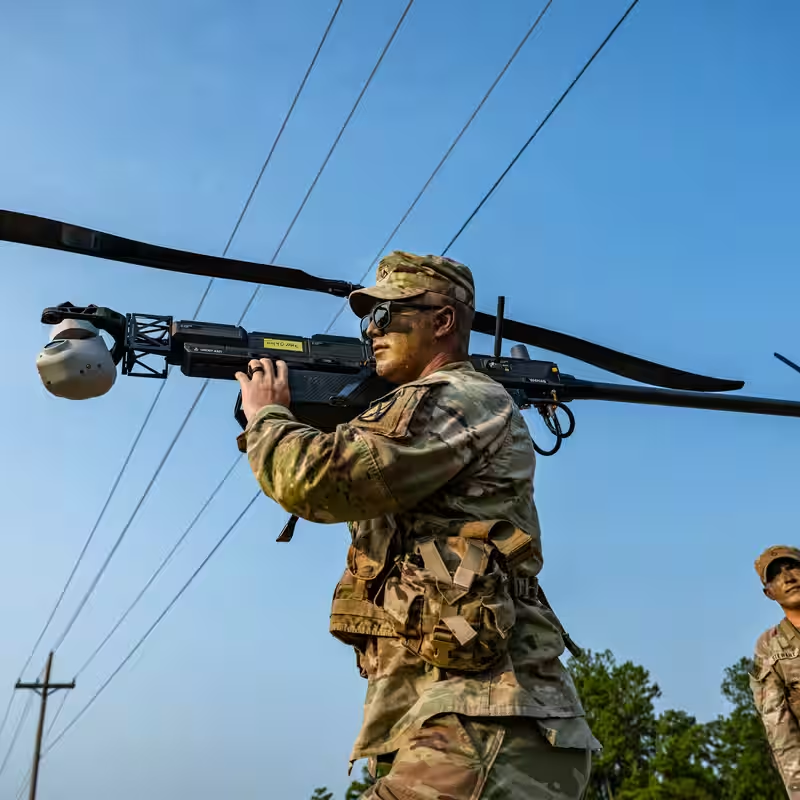Table of Contents
- A Wake-Up Call from Ukraine
- Drone Tactics Reshape Modern Battlefields
- The Army’s Urgent Response
- Training for a Drone-Dominated Future
- Challenges Ahead: Costs and Capabilities
- Sources
A Wake-Up Call from Ukraine
In a dimly lit command tent during a recent 11-day war simulation, U.S. Army Colonel Joshua Glonek watched as a small drone relayed live footage of two dozen enemy vehicles hidden under dense forest cover. The discovery—once the stuff of high-tech fantasy—was now routine. But what followed wasn’t just tactical success; it was a stark realization: the U.S. Army is playing catch-up in the drone warfare race.
The war in Ukraine has become the world’s most visible drone battlefield. From kamikaze quadcopters to long-range surveillance UAVs, drones are no longer support tools—they’re central weapons. And American military leaders are sounding the alarm.
Drone Tactics Reshape Modern Battlefields
What’s changed? Everything.
Just a decade ago, drones were largely used for reconnaissance by advanced militaries like the U.S. Today, off-the-shelf models modified with grenades or shaped charges can disable tanks, ambush convoys, or assassinate high-value targets—all for under $1,000.
Ukraine has deployed over 1 million drones since 2022. Russia responds with electronic warfare, anti-drone guns, and AI-powered detection systems. Meanwhile, China and Iran are mass-producing drone swarms designed to overwhelm defenses.
The Army’s Urgent Response
Facing this new reality, the U.S. Army has launched an aggressive modernization push. At the heart of it: rethinking doctrine, procurement, and training around drone warfare.
“We’re not just buying more drones—we’re rebuilding how we fight,” said Col. Glonek, whose brigade recently completed one of the Army’s first large-scale exercises built entirely around drone integration.
The Army is now testing:
- AI-enabled drone swarms that coordinate attacks autonomously
- Portable counter-drone jammers for infantry squads
- “Drone hunters”—soldiers trained to detect, disable, and even hijack enemy UAVs
Training for a Drone-Dominated Future
At the National Training Center in California, mock battles now include drone “red teams” that mimic Russian and Chinese tactics. Soldiers learn to operate under constant aerial surveillance and respond to drone-launched ambushes.
“If you’re not thinking about drones every second of a mission, you’re already behind,” said one junior officer who participated in the drills.
The Army is also fast-tracking contracts with U.S. tech startups—bypassing traditional defense giants—to field agile, modular drone systems in months, not years.
Challenges Ahead: Costs and Capabilities
Despite the urgency, hurdles remain:
| Challenge | Current Status |
|---|---|
| Budget constraints | Drone programs compete with legacy systems like tanks and artillery |
| Electronic warfare gaps | U.S. forces lack widespread, mobile jamming tech |
| Doctrine lag | Field manuals still treat drones as “optional” assets |
| Supply chain risks | Many commercial drones rely on Chinese components |
Moreover, while Ukraine innovates out of necessity, the U.S. military must balance innovation with scale, interoperability, and global readiness.
Bottom Line
The drone revolution isn’t coming—it’s already here. The U.S. Army knows it can’t afford to lag. As Col. Glonek put it: “The next war won’t be won by the side with the biggest tank. It’ll be won by the side that sees first, strikes fastest, and adapts in real time.”
And in that race, drones are the new frontline.
Sources
The New York Times: The Army’s Race to Catch Up in a World of Deadly Drones




